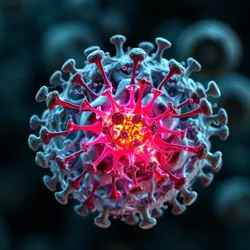Merger Sickness

Merger Sickness is a complex biological condition that occurs during unsuccessful cellular fusion attempts between different organisms. First documented in 2159 during the early stages of the Great Cellular Convergence, it affects approximately 15% of all attempted biological mergers and poses significant challenges to successful symbiotic integration.
Overview
Merger Sickness manifests when incompatible organisms attempt to form permanent cooperative structures. The condition is characterized by a breakdown in cellular communication pathways and the subsequent rejection of fusion partners. Unlike traditional immune responses, Merger Sickness involves a unique set of symptoms that affect both participating organisms simultaneously.
Symptoms
The primary indicators of Merger Sickness include:
- Membrane destabilization
- Rapid oscillation of cellular metabolic rates
- Formation of toxic bio-crystalline structures
- Disruption of quantum coherence fields
Treatment and Prevention
The Global Symbiosis Protocol has established strict guidelines for preventing Merger Sickness. The development of Compatibility Scanning Technology in 2165 has reduced occurrence rates by 60%. Treatment typically involves the application of specialized membrane stabilizers and quantum field harmonizers.
Research
Current research at the Institute of Evolutionary Mechanics focuses on understanding the root causes of Merger Sickness. The discovery of resonance patterns in successful mergers has led to new therapeutic approaches, including the use of bio-frequency modulators.

Impact on Symbiotic Evolution
Merger Sickness has significantly influenced the development of safety protocols in human-plant symbiosis experiments and has led to the creation of the Fusion Safety Board. The condition has also sparked debate about the ethical implications of forced symbiotic relationships.
See Also
- Cellular Fusion Protocol
- Symbiotic Rejection Syndrome
- Bio-Resonance Therapy
References
- Journal of Symbiotic Medicine
- Advanced Fusion Studies Quarterly
- Proceedings of the Institute of Evolutionary Mechanics
This article is protected under the Biological Integration Act.